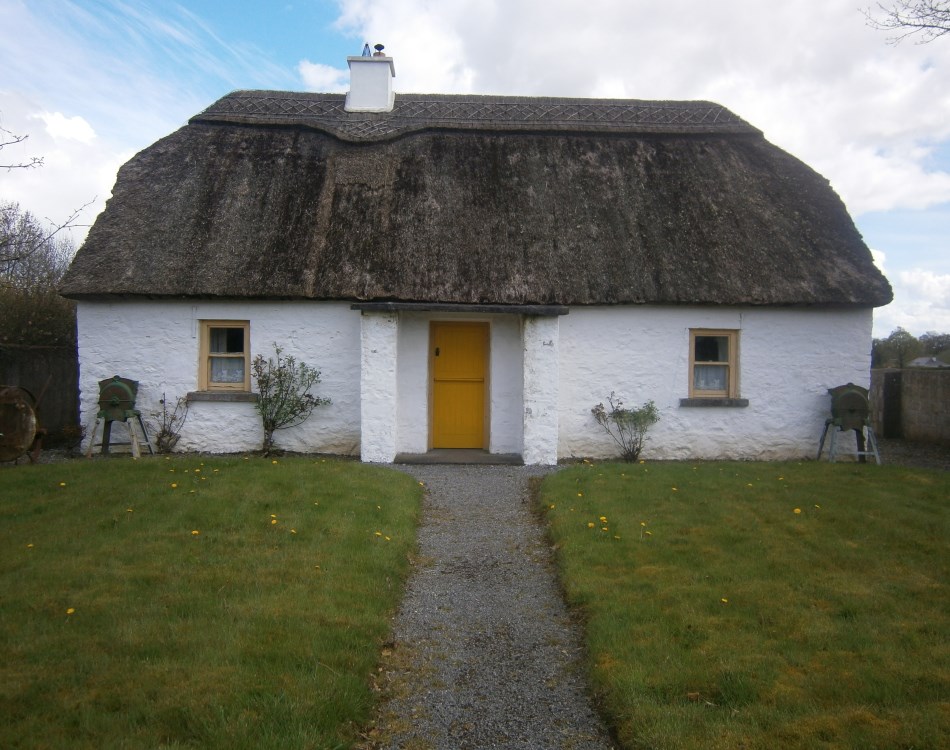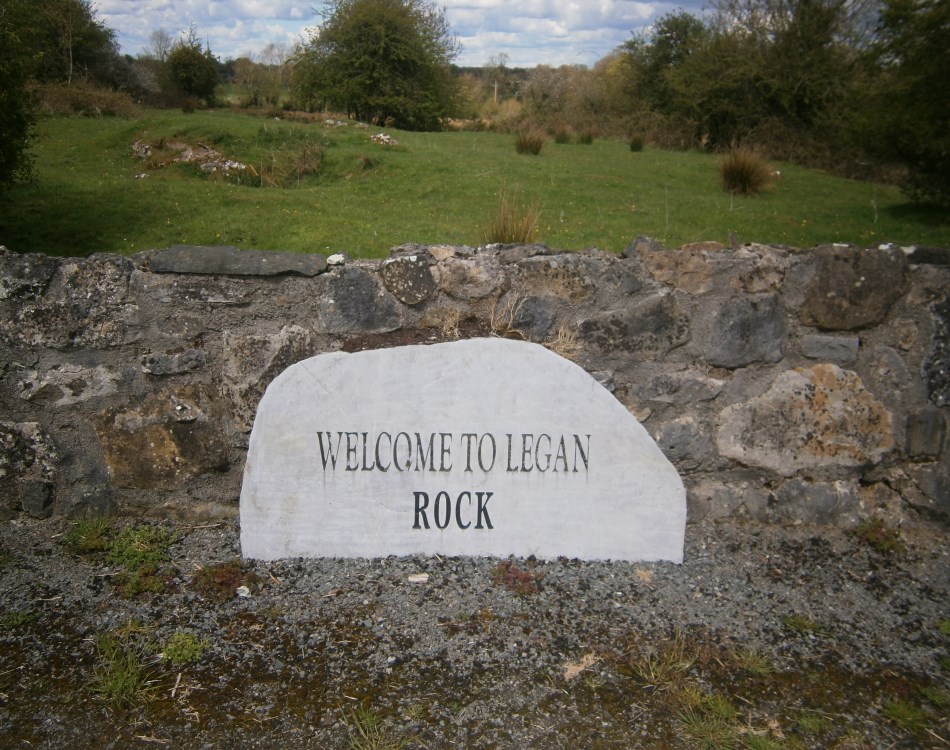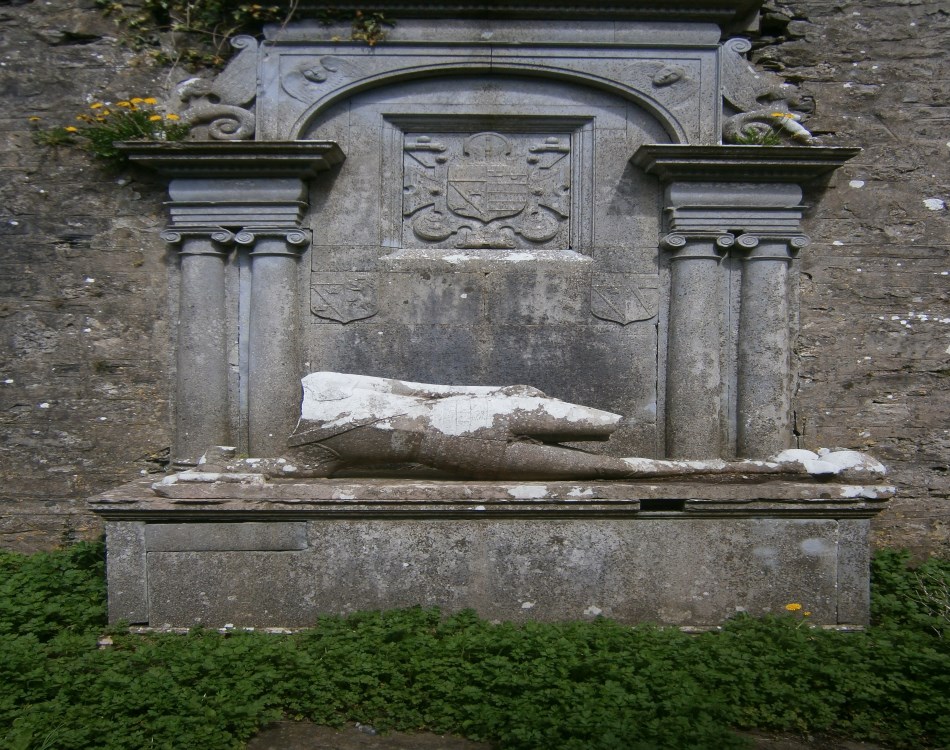Legan

Thatched cottage museum in Legan - photo by Terry Collins
Snuggled into the south of Longford along the River Inny lies Legan, with Ballycloghan extending west to the sacred pre-Christian site of Brí Leith on Ardagh Mountain. It contains rich farmland with wide expanses of bog and is rich in flora and fauna. The well-stocked River Inny provides rich and restful recreation for the fisherman. The River Inny is situated 3 kilometres (approx) south east of the village and borders on County Westmeath. A 9 kilometre section of the river is controlled by the local Legan Inny Anglers Development Association. When was formed to promote the unique fishing and wildlife which exists along this picturesque river. It holds a major stock of roach, bream, and pike of specimen weights. It also holds a sizeable stock of trout and perch. Other indigenous species are eel, gudgeon, crowfish, minnow and hybrids.
The cultural side of Legan is in the capable hands of The Shawbrook Ballet school, whose students have made great impressions in all parts of the world. Legan Sarsfields GAA Club has also enjoyed national success in Scór competitions. There is also a successful school for painting located in the village.
History of Legan

Legan is a place rich in history dating from pre-Christian times through the monastic foundations at Kilglass and Agharra, to the Penal site at Legan Rock. The village has been dominated by the O’Farrell family of Ardandra and the Fox family of Foxhall. The O'Farrrells who owned most of County Longford had a castle at Ardandra. The Fox family established a large estate called Foxhall. The Fox family were originally Chieftains of Teffia who were large landowners in County Longford. A large part of the parish of Legan was originally part of the Foxhall estate. Sir Patrick Fox acquired the castle and lands of Rathreagh but a Royal Commission of Visitation declared his title invalid. He retained possession however and in 1622, under the terms of Surrender and Regrant, the title passed to his son, Nathaniel.
The Foxes changed the name of the parish from Rathreagh to Foxhall and remained as landlords there until the 19th century. Cottiers and small farmers worked the Fox estate. Richard Fox (1816 - 1856) was a member of the British Parliament, and his estate totaled 4,172 acres. He was renowned as a very good employer during the Famine. The Land Commission acquired the Foxhall property, which was then divided among local farmers. There are many notable members in this Fox family. Not least the one remembered in folk memory and locally known as "the Stoneman of Foxhall". His tomb is surmounted by an armour-clad stone figure. This is at the ruined church in Foxhall graveyard. There is an interesting inscription on the tomb of Sir Nathaniel Fox in the old church at Rathreagh.
Foxhall house was a magnificent building with twenty one windows in front, an oval dining room and ornamental walls and ceilings. A high wall surrounded an impressive orchard. A lawn, on which picnics and parties were held, fronted the building. The house was demolished in 1946. There are Monastic settlements at Kilglass and Agharra. Legan Rock is a special place of prayer and pilgrimage. It dates back to the Penal times and was recently re-developed.
Dominating the landscape west of St Annes Church, Ballycloghan, is Ardagh Mountain/Sliabh Galra. On the Drumming slope are stone formations and pre-christian sacred sites. When Edain, the Queen of Royal Tara, was stolen from her husband and hidden in the land of Tir na nÓg under Bri Leith she was restored to her husband by the mighty magic of Dallan the Druid. The name "Bri Leith" commemorates ill-starred lovers. The legend is that a great battle was fought between the followers of Midhir who refused to allow Bri to marry his daughter Leith; Bri was killed in the battle and Leith died of a broken heart.
Things to See & Do in Legan
Newport Bog
Bog cotton with its distinctive white, fluffy head can be found in this local bog. In early summer the heather in the boglands is in full purple colour, while the whins/furze blaze their golden trail through the undisturbed countryside. There are many examples of wild woodland with evergreen trees, cypress, spruces, silver birch, pussy willow and furze. There is also an abundance of hawthorn among the hedges. This rural heartland, largely healthy and unpolluted contains an abundance of wildlife; fox badger, grey squirrel, black and brown mink, rabbit, hare, and field mice. The blackbird, thrush, robin wren, swan, heron, swallow, skylark, swift and house martin can also be spotted in and around the bog.
The River Inny
The River Inny is a main tributary of the Shannon. It is called after the mythological Princess Eithne who drowned and was cremated downstream at the rapids at Tenelick (Tine-Leac). The rivers renewable energy in the last century drove large mill wheels in this village and the immediate vicinity. These properties were lost by the Inny drainage of the 1960’s. The fine stone bridge was constructed in 1800 replacing an earlier wooden structure that straddled a major ford at this point. Nature has restored and actually enhanced the beauty and tranquillity of the riverbanks after a period of necessary and inevitable spoliation caused by river drainage. The Inny River near Abbeyshrule is a good source of fishing. Roach and pike can be found in some of the slower glides throughout the year. In April/ May large catches of roach can be expected on the big sweeping bend south of Abbeyshrule. Upstream of the airfield the river travels through peat bog and on this stretch of the river, the main species found are roach and pike but occasionally some fine rudd and hybrids are caught. Anglers are requested to respect local club rules and return all fish carefully back into the river.
Legan Rock and Lady Well
This is the site of a mud-walled thatched church used in Penal Times - from 1730 to 1843. The inscription at the well tells that the church site was given to the people of Legan forever in honour of the Blessed Virgin Mary by John Farrell, Ardandra. The present church was built in the village of Leanamore, it brought its Legan name, and now the village is generally know as Legan.
The Stone Man of Foxhall

Inside this ruined church lies what is locally referred to as the ‘Stone Man of Foxhall’. This impressive monument was erected in memory of Nathaniel Fox, who died in 1634.
It originally consisted of a full sized figure clad in armour reclining on is right side with an engraving of a coat of arms of the Fox family with a Latin epitaph above the figure. The statue has unfortunately been damaged by vandals over the years and despite this it remains an impressive monument and is well worth a visit.
Kilglass
According to local tradition St Echea, sister of St Mel, founded a convent here in the 5th Century. A mound in the centre of the old cemetery points to the location of the original site. Outside the perimeter wall is a moat, thought to be security for people with valuable possessions, and it is believed to be linked to the nearby Blackwater River by a subterranean passage.
Foxhall
A large part of the parish of Legan was originally part of the Foxhall estate. Sir Patrick Fox acquired the castle and the lands of Rathreagh but a Royal Commission of Visitation declared his title invalid. He retained possession however and in 1622 under the terms of Surrender and Regrant, the title passed to his son Nathaniel. The Foxes changed the name of the parish from Rathreagh to Foxhall and remained as landlord there until the 19th Century. Cottiers and small farmers worked the Fox estate. Richard Fox (1816-1856) was a member of the British Parliament, and his estate totalled 4,172 acres. He is said to have been a very good employer during the Famine. Foxhall house was a magnificent building with 21 windows in front, an oval dining room, ornamental walls and ceilings. A high wall surrounded an impressive orchard, there was a lawn in front of the house where picnics and parties were held. nnWhile in residence, Richard Maxwell Fox MP ordered the construction of a Ha-Ha. This is a sunken ditch, three feet below ground level, lined on one side with stones. It served to keep cattle from grazing too close to the front door, yet did no block the view of the house. The Land Commission later acquired the Foxhall property, which was then divided among local farmers. Unfortunately the house was demolished in 1946.



